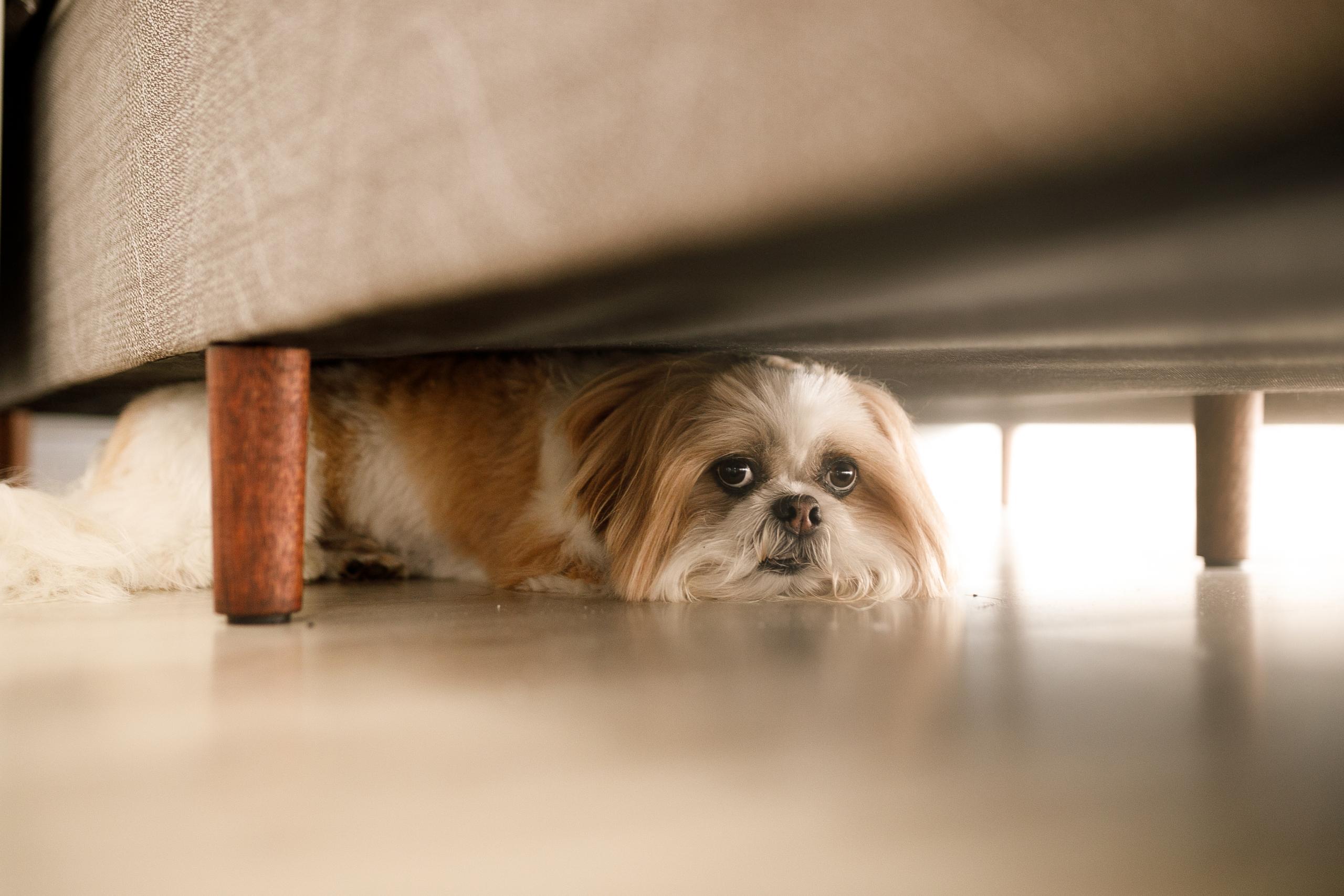Keep calm and carry on…
Our canine companions are extremely sensitive to the environment around them, which can lead to anxiety and stress, but there are plenty of ways to help your furry friend

Like humans, dogs can feel stressed from time to time and there area wide variety of causes. This may be a particular issue at the moment as lockdown restrictions lift and our routines alter, so it’s worth keeping an eye on our dogs to ensure they are equipped to cope with any changes. Stress can also lead to longer term problems, such as anxiety, and affect your dog’s behaviour. The experts at pet charity Blue Cross share their advice on what to look for so that you can reduce the stress your dog may be experiencing and prevent future problems.
SUBTLE SIGNS YOUR DOG MIGHT BE STRESSED INCLUDE:
- yawning – unless your dog is tired
- panting – often with a curled tip of their tongue instead of relaxed
- pacing – back and forth
- licking their lips
- ears pinned back
- dilated pupils or red around the eyes
- whites of their eyes showing (whale eye)
OBVIOUS SIGNS YOUR DOG MIGHT BE STRESSED INCLUDE:
- loss of appetite
- backing away from someone or a situation
- tail tucked between their legs
- cowering (shrinking down or crouching)
- diarrhoea or increased bowel movements
- trembling or shivering (when they’re not cold or excited)
Some of these signs may also be caused by a health problem and you should speak to a vet if you are concerned.

Causes of stress in dogs
Dogs can become stressed if they are bored, scared, frustrated or anxious. They can also be affected by changes in routine, such as being in busy or unfamiliar surroundings. With children and adults at home during the lockdown, for example, dogs may have had less rest and quiet than usual. They may also have had less exercise, resulting in excess energy with nowhere for it to go.
Defensive behaviours
Sometimes dogs who feel worried or threatened may use more obvious signs to show they are stressed or frightened. This usually means they want to stop something happening or get something or someone to move away. Some stress behaviours include:
• stiffening and staring
• growling
• flashing or showing teeth • snapping
• biting
Dogs will have shown other signs of stress before this, so it’s important to recognise early signs to prevent any unwanted behaviours.
STEPS TO HELP CALM A STRESSED DOG
There’s lots you can do to make your stressed pet feel more at ease once you know what to look for. Understanding the cause will also help you choose the best way to help your dog calm down.

Give your dog time away – avoid or remove your dog from stressful situations. For example, creating a separate space away from children where they can have peace.
Exercise your dog – most dogs love their walks! Not only are they good for their physical health but walks will help your dog’s mental well-being too.
Stay nice and calm – many dogs are very sensitive to their owner’s emotions. If your dog is stressed, keep calm and try not to panic or raise your voice.
Keep your dog entertained – there are lots of things you can do at home to keep your dog entertained to keep their minds focused and distracted from stressful things.
Avoid telling them off – don’t punish your dog, especially if they’re showing defensive behaviours, as this is likely to make them worse. Telling them off may mean they stop one behaviour, such as growling, but start biting or snapping instead.
When to see an animal behaviourist – if your dog is aggressive or displaying any other problematic behaviours, talk to your vet and find a professional animal behaviourist to advise you.
Separation anxiety in dogs – when you return to work, you may notice that your dog looks anxious or stressed. Although dogs will get used to being left for short periods, they may need further training after lockdown.
Advice for parents – be aware of the affect that children can have on dogs, as they don’t always enjoy the attention.
Do dogs dream?

Just like humans, dogs enter different cycles throughout their sleep.
Dreaming is most likely to happen in the REM (rapid eye movement) phase of sleeping. This part of the sleep cycle is when your dog will begin to do one or more of the following:
- paw twitching
- change in breathing
- eye flickering
- whimpering
- barking
- body twitching
- tail swishing
WHAT DO OUR DOGS DREAM ABOUT?
The truth is we’ll never know, because we can’t see inside their heads. But, because a dog’s brain processes information in a similar way to ours, we can take from this that they dream in the same way that we do.
Humans dream to process their day. This helps us to learn and digest what we have experienced. We help ourselves out by mixing our dreams with things that we like or dislike and with people we know or meet through the day. The same goes for our dogs. So, for example, if your dog has a fondness for chasing squirrels or barking at the neighbour’s pet, then that may well play out in their dreams. It’s also likely that your dog is dreaming of you. Dogs are attached to their owners and we play a huge part in our dog’s day. So the likelihood of them dreaming of us is high.
IS MY DOG HAVING A GOOD OR BAD DREAM?
Like humans, dogs may react to their dreams in a physical way. It’s likely that if your dog is happily barking or twitching, their dream is good. Whimpering could mean a bad dream.
SHOULD I WAKE MY DOG UP IF THEY ARE HAVING A BAD DREAM?
No. When we dream, we digest our day as a way of building on our emotional responses so that when we are faced with a situation in real life, we are better equipped to respond to it. It is thought that dogs’ dreams are of equal importance so best leave them asleep.
You can always help your dog have pleasant dreams by giving them a great day – walks, games and ways to keep them mentally stimulated.

Leave a Reply
Please login or register to leave a comment.